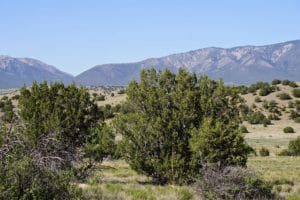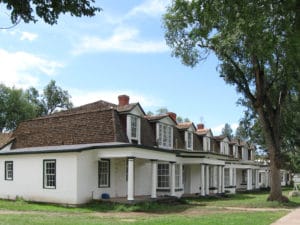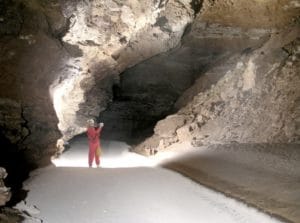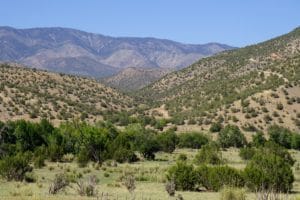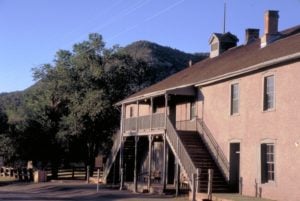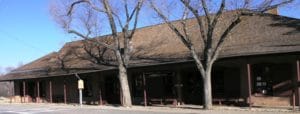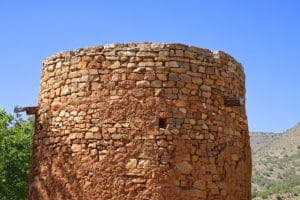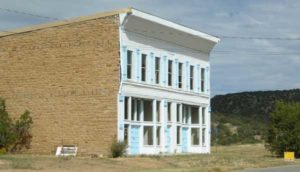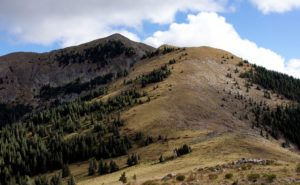Table of Contents
Lincoln, an unincorporated village in Lincoln County, New Mexico, United States, lies in the Bonito valley, surrounded by the Sacramento Mountains and Capitan Mountains. The Lincoln district has a very specific and unique historical significance, which is why the place is a treat for historians and archeologists. The place has several historical structures that date back to the 1800s. These structures have been well-preserved and some have been turned into public museums.
Originally, the place was inhabited by Spanish families who settled there in the 1850s and was called La Placita del Rio Bonito, which means “the place by the pretty river”. The name of the community was changed later when Lincoln County was created on January 16th, 1869. Today, Lincoln has been federally designated as the Lincoln historic district due to its immense historical importance that has been preserved and maintained by several generations. It is one of the best-preserved old west towns which are in existence and one of the most visited monuments in New Mexico.
The violent times earned Lincoln the popularity it has today. Today, the visitors can see the old Lincoln County Courthouse, which has seen the violence of the Lincoln county war. People can see how houses in the past were used as a store, residence, Masonic lodge, and even jail. These historic sites will take you back into the time of Billy the Kid, Pat Garrett, and other characters of the Wild West, which is now frozen in time.
Presently, nine out of the several historical structures are open to the public as museums, which are operated by the New Mexico historic sites. One of these majestic structures includes the Courthouse, where Billy the Kid killed deputies, James W. Bell and Bob Olinger, the Covento, and others. Apart from these significant sites, there is an infamous historical Wortley Hotel from that time, which Pat Garrett used to take care of, which is also central to the story of Billy the Kid. The hotel began to serve people in 1874 and still provides lodging facilities to travelers. There are also a few bars and Annie’s Little Sureshot Cafe, which serves coffee and snacks to tourists.
With a lot of things to discover here, Lincoln still gives you the taste of earlier times with its century-old adobe architecture and dusty streets. Here, this article unfolds some other important aspects of the history of Lincoln:
Lincoln National Forest
- The Lincoln National Forest is one of the few quite popular sites in the Lincoln district that are so well-preserved. The forest is located in the South Central New Mexico and is the birthplace of the world-famous Smokey Bear, which is the symbol of the campaign preventing forest fires.
- Consisting of three ranger districts namely, Sacramento, Guadalupe, and Smokey Bear, the forest also has three major mountain ranges, Guadalupe and Sacramento and Capitan in Southeastern New Mexico. Elevations of 4,000 to 11,500 feet pass through five different life zones from the Chihuahuan desert to sub-alpine forest, with the vegetation consisting of rare cacti in the lower elevations to Englemann spruce in the higher. In the White Mountain wilderness, one can find pristine waters. The water flows below majestic Sierra Blanca Peak. Further, the fishing experience is the best in the spring fedstreams of the Southern Sacramento Mountains.
- The vegetation in the Lincoln forest comprises of semi-desert plants like pinyon pine, juniper to spruce, fir, high-elevated grasses, and forbs. The weather and the elevation are directly proportional here; with summers having sweltering temperatures down in the desert and the need of wearing a jacket in the high country. The July-August are rainy months with regular thunderstorms in the afternoons with the springtime being dry and windy.
- Further, a beautiful blend of high elevation and an abundance of moisture in the air result in a beautiful array of colors from flowering plants during the summer months. The mountain slopes are wrapped with oaks, maples, and aspens in stunningly beautiful colors in fall. This perhaps is the most beautiful time to visit the place. The towns of Lincoln, where Billy the Kid shot the deputies and captain, the burial site of the original Smokey Bear, are located near the district.
- The forest is also a treat for campers as it offers a lot of beautiful camping sites. It provides a lot of scenic, dispersed, and developed camping areas. As perfect this place is for camping, the forest is also known for its hiking trails and experiences. From beautiful and easy morning treks to some breathtaking and ravishing difficult trails, the Lincoln forest is a real treat for hikers as well. People also come here to experience horseback riding, mountain biking, and off-roading.
- But hiking and camping are not the only things available to do in the majestic forest. Skiing is perhaps another most famous thing to do here. From cross-country skiing to downhill developed ski areas and resorts, the Lincoln provides skiing access for almost 365 days a year. The Mescalero Apache Tribe operates the ski Apache, a downhill ski resort with a base elevation of 9700 ft. located primarily on the forest land. The Lincoln national forest is perhaps one of the best places to visit in Lincoln with several activities to enjoy such as camping, hiking, and skiing. Not to mention some of the most significant historical sites in the district, which are a must-visit.
Smokey Bear Park
- Located in the center of the town of Capitan, which was founded as Gray in 1884, the name of the Park, Smokey Bear has a really interesting historical significance. In 1944 during WW II, the USFS decided to make use of a bear for spreading the fire prevention message. They named a bear after a New York Assistant Fire Chief, “Smokey” Joe Martin. Later in 1950, on May 9, in the aftermath of a deadly fire in the Capitan Mountains, a badly burned cub was found. First-aid was administered to the cub and he was sent to Santa Fe for further treatment. Later, the story of this cub was told in the newspaper and the radio across the nation. It was this when the Smokey became the living symbol of preventing forest fires.
- When Smokey grew old, plans were made for his retirement. The people of Capitan wanted their bear to be returned to his hometown, but due to his death in 1976, Smokey was flown home and buried in what is now Smokey Bear Historical Park.
- That is the story behind the famous Smokey Bear Park. It is the only park in New Mexico to be run by the NM state forestry. A 10 min short film is shown to tourists who visit the Park, which throws light on the history of the fire prevention program, black bears, and forest health. The grave of the famous Smokey the bear is located in a serene and beautiful corner of the part, much like the Capitan Mountains, where he was first found.
- There is a great variety of flowers and animals in the area and that apart, the park offers a playground for children with a fire tower, climbing wall, fire engine, and swings. Right next to the playground are picnic tables and restrooms for the visitor’s comfort. The park offers lots of activities for adults as well as children.
- Smokey has appeared on several national parades and television shows, cartoons, and fire prevention posters throughout America. It is because of him that several other countries also began to adopt the idea of a bear to symbolize fire prevention. Smokey the bear became so popular that he used to receive tonnes of emails every day and due to which he had to have his own zip code. Smokey died in 1976 on November 9 due to natural causes and his body was returned to Capitan, New Mexico where he was buried in the Smokey bear Park.
Fort Stanton Historic Site
- Fort Stanton, a historic site is situated on 240 acres and surrounded by 25,000 acres of undeveloped BLM land in South-central New Mexico. There are around 88 buildings on this site, which dates back to 1855. These buildings though require a bit of repair and development, have survived through the tests of time, and remained majestic and resplendent, attracting thousands of people over the years.
- There are also quarters and barracks, a hospital and morgue, nurses quarters, a guardhouse, a dining hall, a chapel, a power plant and laundry, a gymnasium and pool, a fire station, horse stables at the fort which add up to the magnificence.
- Fort Stanton was established in 1855 as a military post to control the Mescalero Apache Indians. The fort in 1861 was abandoned to Confederate forces in the early stages of the American civil war. The fort was set on fire by the retreating force, but a rainstorm extinguished the fire. The fort was completely destroyed by the Confederates when they left after only a month’s occupation.
The fort was rebuilt after the war and is currently one of the most splendid state monuments and museums and is visited by thousands of people yearly.
Snowy River Cave
- Established in 2009 to protect, conserve, and develop the old, historic, educational, and terrific resource, the Snowy River Cave is a national conservation area established in 2009 and is among the most visited places in Lincoln. Snowy River is a significant and well-known passage within Fort Stanton Cave and is the longest cave formation the world has ever known. Today, approximately 15 miles of passage have been mapped, which was previously unknown, without reaching the end.
- Apart from this all, the area offers several recreational activities. The NCA offers 3 miles of horseback riding and hiking trails throughout open meadows and canyons. Trails are marked with flexible fiberglass markers with the name of the trail attached to them. The landscape is protected by recommending the riders to stay on the established trails.
- The trail is filled with scenic views of the Sacramento and Capitan Mountains that surround the trail. The cave has over 40 miles of mapped passages and is open usually for recreational purposes only. The cave is also popular for its unique velvet formations and there are also interesting helictites, aragonite, selenite needles, and types of gypsum.
Billy the Kid Trail
- Henry McCarty, popularly known as Billy the Kid, was an outlaw and gunfighter of the American old west. He is known for his bold and brave act of killing 8 men at the age of 21 before getting himself killed.
- He also committed three murderers allegedly during the New Mexico Lincoln county war, which took place between two factions, competing for profits over goods and cattle interests in the county.
- On November 13, 1878, Governor Wallace proclaimed an amnesty for all those involved in the Lincoln county war if they are not already under indictment. Even though Billy the Kid was not one of these, he formed a gang, referred to as the “hustlers” who survived by stealing and rustling cattle.
- Governor Wallace in 1880 put a reward of $500 on his head. He was thus captured in December 1880 and was sentenced to death in May. Despite that he escaped, killing two guards. He was later tracked down, by Garret and was shot on July 14, 1881.
- Stories of Billy the Kid are popular across the world, and they show how Billy’s fearless acts reflect the thirst for economic Justice.
Below are some of those famous spots that marked the presence of Billy the Kid- the spots that are witness to this historical saga.
-
Old Lincoln County Courthouse museum
The Courthouse is the place where Billy the Kid, after being captured and sentenced to death, planned his most famous escape and succeeded. He also killed two of the officers in the process. Billy was later tracked down by Garret and was shot dead.
-
Tunstall Store
The Tunstall store now is a museum, which is a 19th-century general store where dry goods and hardware from the time are portrayed.
-
Covento
Also known as the first Courthouse where on a cold December night in 1873, four men were killed and a man and a woman were injured, when the Horrell brothers, who were in search of vengeance for an earlier confrontation with the local law, shot into the building, during a wedding baile.
-
Torreon
According to traditional belief, Torreon was at the center of a plaza surrounded by a number of jacales. This plaza was part of a series of settlements known as Las Placitas del Rio Bonito. It is actually a circular stone fortification that was erected by Hispanic settlers to keep an eye on raiding Apaches.
White Oaks Ghost Town
- The ghost town of White Oaks is more a cowboy/frontier than adobe Disneyland. The turn to the ghost town of the white oaks is three miles north of Carrizozo on the US highway 54.
- White Oaks came under the eastern influence with about as many lawyers as miners. The Hoyle House, which still exists, is a Victorian house, with a window’s walk on the roofs. White Oaks died when the local fathers tried selling the right of way to the expanding railroad and the gold was mined out. It was one of the favorite places of Billy the kid.
- Visitors from all around the world visit the place and are welcomed to explore several historical buildings such as the Cedarvale cemetery, and the historic No Scum Allowed Salon.
Anderson Freeman Visitors Center
- The structure, built in 1978 by the Lincoln county heritage trust was transferred to the Hubbard Museum of the American West, which was then donated to the Lincoln State Monument in 2006. The building is the central museum of the Lincoln historic site complex. The Anderson Freeman Visitors Center is a non-historic building whose exhibits range from the prehistoric inhabitants of the valley to the Apaches, Fort Stanton, and the Lincoln County War. The jacal exhibit and the tuberculosis shed are just adjacent to the visitors’ center.
- Lincoln has a massive and dynamic history, of which, the Anderson Freeman Visitors Center is a major part.
San Juan Mission Church
- The parishioners under the influence of the father, John Marie Garnier, built this Church from 1885 to 1887. It was the largest church in Lincoln County at that particular time, which was over 3000 sq. Ft. The church is built of adobes built on site with the vigas drawn from the Capitan Mountains. In order to prevent the further deterioration of the church, the remaining parishioners recommend that the church be sold to the State of New Mexico, in 1973.
- The San Juan Mission Church still requires immediate attention due to faulty window work. Yet it attracts countless tourists and visitors throughout the year.
Dr. Wood’s house
- A blend of traditional Southwest abode, and Back east design, Dr. Wood’s house has some remarkable features typical of Lincoln style territorial. Dr. Wood was quite a talented man, and along with his duty as the county doctor, he was an ice cream maker, soap, and winemaker.
- The house was originally built for George and Mary Danner in 1882–1883 and was referred to as “the mansion house of Dr. Skipworth” as mentioned in a mortgage contract in 1893. An incredibly skilled mason, George W. Peppin, who has built almost every house in Lincoln, constructed this historic house.
- The building also known as the Blanchard house was occupied by several other people until Dr. Woods and his wife Mary June, purchased this property.
- This house has been listed on the national historic register and New Mexico register of historic properties.
The Montano Store
- This historic structure has a very specific and unique place in the history of Lincoln. Montano store was built before 1868 and became a state property in 1966 and for at least 30 years after the civil war, the building was used as a store and a boarding house by Jose Montano and his wife Josefa. The Montanos, who were staunch supporters of the Mcsween faction, occupied this house for five days. It is also said that Governor Lew Wallace stayed here for several nights to arrange a secret meeting with Billy the Kid.
- It is, moreover from this building, that Fernando Herrera is believed to have fired a 900 yard fateful shot at Charlie Crawford, who was sitting up in the hills behind the store. The building is about 1400 sq ft. currently exhibits the Hispanic settlement of Lincoln and the construction of adobe buildings.
Luna Chavez house
- Originally two separate houses, built before 1868, the Luna Chavez house is listed on both the National Historic Register and the New Mexico Register of Cultural Properties. The two different houses were linked together by creating a central entrance room. This historic house portrays the early Hispanic construction of buildings without halls. The Luna Chavez house was home to two different families, with Luna residing at the east end and the Chavez family at the west.
- Juan José Lopez lived in this house with his wife, Isabella. Their daughter Joséfa married José Montaño. Lopez served on the April 1878 grand jury that charged Alexander McSween of larceny charges.
Sierra Blanca
- Sierra Blanca is a majestic volcanic mountain range in Lincoln and Otero counties that lies in the South Central part of New Mexico. Sierra Blanca, also known, as the White Peak, is the highest mountain range, standing at 11,981ft. A majority of this Sierra Blanca range is located in the Lincoln National Forest, with a part of it being protected as the White Mountain wilderness area.
- The Sierra Blanca Peak is quite visible from the Tularosa basin, which is several miles away from the ranges. Further, the town of Ruidoso is located exactly at the foothills of the eastern Sierra Blanca range, which is popular for activities like Skiing, camping, and hiking. All this makes it one of the most popular destinations.
Conclusion
From the scenic beauty all around to the dramatic historical instances that took place, Lincoln, in New Mexico has evolved without severing ties with the past. The County is not only home to countless species of animals and plants, but also numerous fun activities including camping, skiing, horseback riding, and much more. The place has been in constant touch with its history while living in the current moment; be it the Covento, the Tunstall Store, or the very popular Billy the Kid’s trail, each spot has been preserved the way it was.
Thus, Lincoln County sets the perfect example of cherishing its past while embracing the future.

